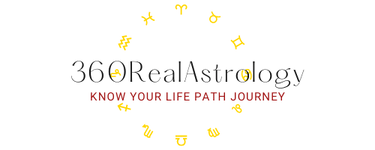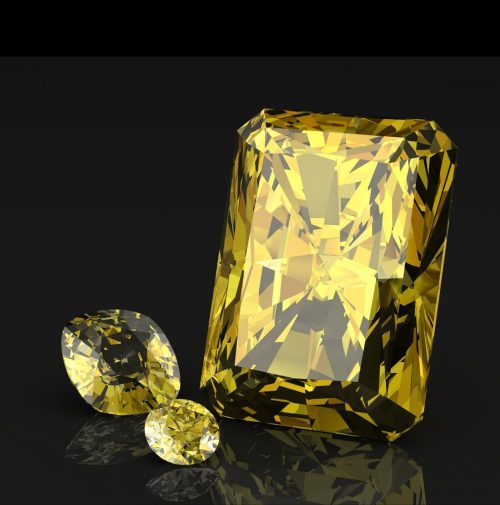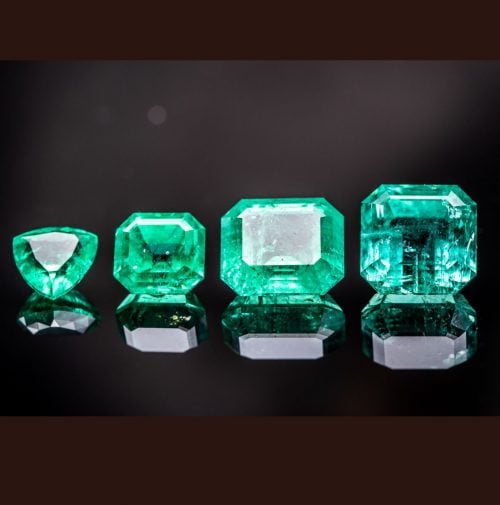Shocking Astrology Facts About Your Sign You Never Knew
Most people only scratch the surface when exploring their zodiac signs. They glance at daily horoscopes without understanding the profound system behind them. I’m here to reveal how celestial objects in the sky create a complex framework that goes far beyond simple predictions.
This ancient wisdom has captivated civilizations for thousands of years. It represents a sophisticated observational science rather than mere fortune-telling. The movements of planets and stars form patterns that influence personality traits and life paths.
Your sun sign represents just one piece of a much larger cosmic puzzle. Birth charts contain intricate details about planetary positions and their relationships. These elements work together to shape who you are and how you interact with the world.
Throughout this guide, I’ll separate common misconceptions from evidence-based insights. My research demonstrates how this practice integrates ancient observations with modern self-discovery techniques. You’ll discover unexpected truths about relationship dynamics and personal growth opportunities.
Key Takeaways
- Astrology encompasses far more than basic horoscope predictions found in newspapers
- Your sun sign represents only one component of a complex cosmic system
- Birth charts contain intricate details about planetary influences and relationships
- This ancient practice combines observational science with personal insight techniques
- Celestial patterns influence personality formation and relationship dynamics
- Understanding these facts can reveal unexpected growth opportunities
Introduction to Astrology and Its Surprising History
What many consider a modern fascination actually has roots stretching back over 25,000 years to our earliest ancestors. I’ve traced humanity’s celestial curiosity to ancient bone markings that tracked lunar cycles. These early observations formed the foundation of a system that would evolve across millennia.
Ancient Roots and Modern Interpretations
The formal study began in Old Babylonian Mesopotamia around 1800 BCE. Priests observed celestial bodies to predict seasonal changes and interpret divine messages. This practical approach to understanding the sky served agricultural and social needs.
I find the etymology revealing—the word derives from Greek roots meaning “account of the stars.” This distinguishes it from astronomy, which became the scientific study of celestial objects by the 17th century. Different cultures developed unique systems over thousands of years.
Ancient Indian, Chinese, and Maya civilizations created sophisticated methods connecting celestial observations to terrestrial events. Their work demonstrates how this practice organized time and revealed cosmic patterns. Modern interpretations build upon these ancient foundations while maintaining the core connection between stars and human experience.
The Fundamentals: Sun, Moon, and Rising Signs
Your astrological profile comprises three distinct but interconnected components that together reveal your complete cosmic signature. I emphasize that these three primary signs work in harmony to create your unique personality blueprint.
Understanding Your Sun Sign
Your sun sign represents your core essence rather than just surface-level traits. It defines the fundamental qualities that drive you from deep within your being.
This crucial placement is determined by the sun’s position at your exact time of birth. I’ve found it reveals what truly motivates and energizes you throughout life.
The sun sign governs your inner drive and authentic self-expression. It shows the activities that naturally attract you and make you feel most alive.
Exploring the Moon and Rising Signs
Beyond the sun, your moon sign reflects your emotional nature and subconscious responses. It governs how you process feelings and internal experiences.
The rising sign, also called the ascendant, represents your external presentation. I explain it as the mask you wear when meeting new people.
These three signs create a comprehensive personality profile capturing different dimensions of your being. Understanding their interplay provides a complete astrological picture.
Your moon placement works with the other components to form your unique combination of traits. This triad reveals why people with the same sun sign can display different characteristics.
Deep Dive into Astrology Facts
What truly distinguishes this field is its profound respect for human autonomy within a framework of celestial influence. I clarify that it operates as a form of ancient wisdom, not a pseudo-science or fortune-telling device.
The study examines a person‘s life through specific birth indicators. These include the exact date, time, and location of birth, which map the positions of celestial bodies.
This data is analyzed to reveal tendencies and potential pathways. It never presents absolute predictions.
What Makes This Practice Unique?
Its uniqueness lies in presenting possibilities rather than decrees. I’ve discovered it helps you understand your inherent nature.
You maintain complete free will to choose your direction. The zodiac offers a framework for reflection, not a rigid classification.
This approach empowers self-discovery and personal growth. It respects that you are the author of your own story.
| Common Misconception | Actual Focus | Result for the Individual |
|---|---|---|
| Predicts a fixed future | Maps potential life paths | Empowerment through awareness |
| Removes personal choice | Emphasizes free will | Active participation in one’s life |
| A simple classification system | A tool for deep self-reflection | Greater personal understanding |
The Origin of Zodiac Signs: From Babylon to Modern Times
The concept of dividing the sky into twelve symbolic segments originated not as a mystical practice but as a practical astronomical tool. I’ve traced this systematic approach back to ancient Babylon around 2,500 years ago. Their astronomers mapped the sun’s path, creating the ecliptic.
Babylonian Beginnings
Babylonian scholars invented the zodiac by observing planetary movements and stars. They split the celestial circle into twelve equal parts. This division helped them track time and seasonal changes with remarkable precision.
This foundation spread from Mesopotamia to other great civilizations. It reached Ancient Greece, where the system gained the name we use today.
Evolution of Zodiac Symbols
The term “zodiac” comes from the Greek word “zodiakos,” meaning “circle of animals.” This perfectly describes the twelve animal signs. The system evolved as it traveled to Rome and across Europe.
I find it fascinating that Chinese astrology, developed during the Zhou dynasty, shares surprising parallels. Both systems use twelve divisions and complex aspects. This shows a universal human desire to find meaning in the cosmos.
| System | Origin Period | Key Structural Feature | Cultural Influence Path |
|---|---|---|---|
| Western Zodiac Signs | 19th-17th Century BCE (Mesopotamia) | Twelve 30-degree segments along the ecliptic | Mesopotamia → Greece → Rome → Europe |
| Chinese Astrology | Zhou Dynasty (1046-256 BCE) | Twelve-year cycle with animal symbols | Developed independently with later parallels |
The Influence of Celestial Bodies on Personality Traits
Your distinctive traits emerge from a complex interplay of planetary forces recorded at your exact arrival time. I’ve researched how this cosmic snapshot creates your unique character blueprint.
The specific arrangement of heavenly objects forms a personalized map of potential. This system reveals why individuals with identical sun signs display different characteristics.
Planetary Alignments and Their Impact
Each planet’s position contributes distinct qualities to your overall personality profile. I’ve found that Mercury influences communication style while Venus shapes relationship preferences.
These celestial bodies interact with zodiac signs to create nuanced expressions. The combination produces the rich diversity of human character we observe.
Understanding Celestial Mechanics
The mechanics involve multiple factors working simultaneously. No single planetary position determines your entire personality.
I emphasize that the complete birth chart provides essential context. Various placements interact to shape different aspects of your being.
| Celestial Body | Primary Influence Area | Zodiac Sign Interaction |
|---|---|---|
| Sun | Core identity and life purpose | Modifies basic character expression |
| Moon | Emotional nature and instincts | Shapes emotional responses |
| Mercury | Communication style and thinking | Affects mental processes |
| Venus | Relationship values and aesthetics | Influences social preferences |
| Mars | Action style and motivation | Directs energy expression |
Mercury Retrograde: A Catalyst for Self-Discovery
The planetary phenomenon of Mercury retrograde has been widely misunderstood in popular culture. I’ve observed how this time creates unique opportunities rather than just challenges. The apparent backward motion invites us to slow our pace and look inward.
This period encourages deep reflection on our life direction and personal patterns. Many unexpected issues that surface during retrograde serve as valuable learning experiences. They highlight areas needing attention that we might otherwise overlook.
Unexpected Opportunities During Retrograde
I’ve discovered that Mercury retrograde functions as a cosmic reset button. It provides space to reconsider goals and reassess relationships. This introspective energy supports meaningful personal growth.
The slower rhythm allows for examining behaviors and decision-making processes. Rather than fearing this phase, I suggest embracing it as designated reflection time. This perspective transforms potential frustrations into growth opportunities.
This approach to astrology demonstrates how celestial cycles support conscious living. The retrograde period helps realign your path with authentic desires. It’s ultimately about making more intentional choices.
Exploring the Intricacies of Your Astrological Birth Chart
Few people realize that their complete astrological profile requires more than just their birth date to reveal its full complexity. Your birth chart represents a precise map of the sky at your exact moment of arrival. This celestial snapshot captures the specific positions planets occupied during that critical time.
Decoding Planetary Positions
The accuracy of chart interpretation depends entirely on knowing your exact birth time and location. Planetary positions change rapidly throughout each day due to Earth’s rotation. Without this precise information, an astrologer cannot accurately calculate your complete profile.
I’ve discovered that the geometric relationships between planets—called aspects—reveal dynamic connections within your personality. These angles show how different life experiences interconnect. Understanding these relationships provides deeper insights than simple sun sign astrology.
An experienced astrologer uses your birth data to create a unique cosmic blueprint. This comprehensive approach incorporates multiple planetary placements within the zodiac. The resulting chart offers insights into natural talents and potential challenges that basic descriptions cannot capture.
Your complete birth chart serves as the most detailed tool in this ancient practice. It reveals personality dimensions and life themes through intricate planetary configurations. This level of detail demonstrates why personalized analysis provides such valuable self-understanding.
Uncovering the Role of Astrological Houses in Life Events
Beyond the zodiac signs and planets, astrological houses provide the contextual framework for understanding where life events manifest. I’ve discovered these twelve divisions map the different territories of human experience.
House Interpretations and Their Significance
The houses represent specific life areas like career, relationships, and personal identity. Each house plays a distinct role in your overall chart configuration.
Planets positioned in different houses interact with the zodiac signs associated with those areas. This creates layers of complexity in your astrological makeup. House interpretations reveal which life domains receive the most planetary energy.
Transits, Progressions, and Personal Growth
As planets move through various houses over time, they activate different life sectors. These transits trigger events and growth opportunities in sequence.
I’ve found challenging transits often push individuals to develop new skills. Understanding this dynamic system transforms static chart interpretation into a tracking tool for personal development.
The changing positions illuminate life areas needing attention. This creates natural cycles that shift focus across different domains throughout your journey.
Rising Sign: Your First Impressions and Outer Persona
Your ascendant sign serves as the initial filter through which the world encounters your personality. This crucial placement represents the zodiac sign ascending on the eastern horizon at your exact birth moment. I consider it your cosmic first impression.
Understanding the Ascendant Effect
The rising sign creates what I call your astrological “mask.” It governs how you present yourself before others discover your deeper nature. This external personality shapes initial interactions with new people.
Your ascendant influences more than just social presentation. I’ve observed it affecting physical appearance, mannerisms, and body language. The way you carry yourself often reflects this sign’s characteristics.
While your sun sign represents core essence, the rising sign controls the packaging. It filters how your sun and moon signs express themselves socially. This explains why people with identical sun signs can appear remarkably different to others.
In relationship dynamics, compatible rising signs create smoother initial connections. When two people share harmonious ascendants, their first meetings often feel naturally comfortable. This astrological alignment can explain instant rapport between individuals.
The ascendant governs your instinctive approach to unfamiliar situations. It represents the persona you adopt when meeting others for the first time. Understanding this effect provides valuable insight into social interactions.
Zodiac Compatibility: Secrets Behind Relationship Dynamics
The true measure of relationship harmony extends far beyond simple sun sign comparisons. I’ve discovered that lasting connections between people depend on intricate celestial patterns. These patterns reveal why some individuals mesh naturally while others face challenges.
Comprehensive chart analysis provides deeper insights than basic zodiac matching. It examines how multiple elements interact to shape relationship dynamics.
Matching Chart Elements for Better Bonds
I emphasize that compatibility involves examining rising signs, moon placements, and planetary positions. When these elements align harmoniously, relationships tend to flow more smoothly. This explains why some people feel an instant connection.
Opposite zodiac signs often create powerful attraction through complementary qualities. For example, Aries and Libra balance action with diplomacy. Taurus and Scorpio blend stability with intensity.
Challenging aspects between charts aren’t necessarily negative. They can spark growth and passionate connections that smooth compatibility sometimes lacks.
| Chart Element | Relationship Influence | Compatibility Indicator |
|---|---|---|
| Rising Signs | Initial connection and first impressions | Harmonious ascendants create natural rapport |
| Moon Signs | Emotional understanding and needs | Similar emotional languages foster deeper bonds |
| Venus Placements | Love values and attraction styles | Compatible Venus signs enhance romantic harmony |
| Element Balance | Communication and energy flow | Complementary elements create dynamic balance |
This approach to relationship analysis considers business partnerships and friendships alongside romantic connections. It reveals why certain people naturally understand each other while others struggle to connect.
Love and Venus: The Heart of Astrological Romance
When exploring romantic connections, Venus emerges as the celestial guide to understanding our deepest affections and relationship patterns. This planetary body holds the key to how we experience and express love throughout our lives.
Venus’s Role in Shaping Love
I’ve discovered that Venus’s role extends far beyond simple attraction. This celestial influence governs how we give and receive affection. It reveals our unique love language and partnership preferences.
The mythological connection to the Roman goddess of love reflects Venus’s significance in astrology. Your Venus sign placement shows what you find beautiful in others. It influences your approach to romantic relationships.
Balancing Energies for Relationship Harmony
Achieving harmony in relationships requires understanding Venus’s interactions with other chart elements. I emphasize how Venus balances with Mars for desire and the Moon for emotional needs.
This planetary alignment explains why certain partnerships feel naturally compatible. Venus guides us toward partners who complement our qualities. It helps create balanced, fulfilling connections.
The study of Venus in astrology provides valuable insights into creating lasting love. Understanding this celestial influence can transform your approach to romantic connections.
Being Born on the Cusp: Embracing Dual Influences
Some people experience a unique cosmic inheritance that combines characteristics from neighboring signs. Being born cusp means your birthdate falls within a day or two of the Sun’s movement between zodiac signs. This positioning creates individuals who straddle two distinct energy patterns.
Unique Traits of Cusp Births
The transition between signs doesn’t happen instantly but occurs as the Sun moves through degrees. This gradual shift explains why those born cusp often feel influences from both adjacent signs. I’ve found this creates remarkably blended personality expressions.
For example, someone born on the Aries-Taurus transition around April 19th might display Aries’s fiery passion alongside Taurus’s practical nature. This combination produces individuals who can adapt between different modes of expression. Their unique traits include versatility in handling various situations.
Technically, the Sun occupies one zodiac sign at birth, but proximity to the boundary creates blended trait expression. This explains why some people don’t fully identify with traditional sun sign descriptions. Understanding your cusp position provides valuable insight into your complex nature.
These blended influences bring both challenges and opportunities. Individuals may experience internal conflicts between contrasting qualities. Yet they also enjoy expanded dimensions in their personality makeup. This astrological positioning creates fascinating complexity in human character.
Astrology Myths and Misconceptions Debunked
Several persistent misconceptions cloud the public’s understanding of this ancient practice. I’ve identified key areas where popular beliefs diverge significantly from actual principles.
Myth vs. Reality
Many people confuse this field with astronomy. Astronomy represents the scientific study of celestial objects, while the other interprets their symbolic influence.
Another common myth suggests all practitioners provide identical predictions. In reality, expertise varies greatly among professionals. Quality interpretation requires deep study and experience.
The belief that sun signs alone determine everything ignores comprehensive chart analysis. A person‘s complete profile includes moon signs, rising signs, and planetary placements.
Science, Wisdom, or Both?
This practice isn’t considered traditional science. However, it stems from thousands of years of observational correlation.
Millions embrace it as a tool for self-reflection rather than superstitious predictions. It emphasizes free will over predetermined destiny.
Daily horoscopes represent just one aspect of this complex system. They shouldn’t be mistaken for comprehensive personal analysis.
Astrology in Different Cultures: Western and Chinese Perspectives
Cultural approaches to celestial interpretation reveal fascinating differences between Eastern and Western systems. I’ve studied how these distinct traditions developed independently yet both use zodiac signs to understand human nature.
Cultural Interpretations and Traditions
Western astrology originated in ancient Mesopotamia around the 19th-17th century BCE. This system follows the sun’s annual path through twelve constellations. Each sign corresponds to specific month-long periods in the solar calendar.
Meanwhile, Chinese astrology emerged during the Zhou dynasty (1046-256 BCE). It assigns twelve animal signs to complete years rather than months. This creates a repeating twelve-year cycle where each year carries specific animal energy.
The philosophical foundations differ significantly. Western astrology emphasizes individual birth charts and planetary positions. Chinese astrology integrates Yin-Yang philosophy and five elements theory into its framework.
I’ve discovered that Chinese astrology often emphasizes familial harmony and social roles. The twelve animal signs—Rat through Pig—each carry distinct characteristics. Both systems provide valuable insights despite their different approaches to celestial interpretation.
The Evolving Role of Astrology in Modern Society
The digital age has transformed how we engage with celestial wisdom, creating a fascinating cultural phenomenon that blends ancient tradition with contemporary needs. I’ve tracked this evolution from its 1960s resurgence to today’s app-based consultations.
Contemporary Relevance and Personal Growth
Modern applications focus heavily on self-discovery rather than fortune-telling. People now use this practice as a psychological tool for understanding relationship patterns and career paths.
The shift from agricultural predictions to personal guidance reflects broader societal changes. Today’s enthusiasts seek frameworks for emotional awareness rather than weather forecasts.
Social media platforms and mobile apps have democratized access to celestial insights. This accessibility has fueled tremendous growth in popular engagement with horoscopes.
I emphasize that the current appeal lies in personalized reflection tools. Individuals value systems that acknowledge their unique life experiences amidst mass culture.
| Historical Period | Primary Focus | Main Users | Social Function |
|---|---|---|---|
| Ancient Civilizations | Agricultural timing & governance | Priests & rulers | Practical decision-making |
| 19th Century Decline | Theoretical challenges | Academic circles | Scientific validation debate |
| Modern Digital Era | Personal growth & relationships | General population | Self-awareness tool |
This ancient practice continues to adapt while maintaining its core principles. Its endurance demonstrates humanity’s lasting fascination with celestial influences on our lives.
Conclusion
The depth of astrological wisdom becomes clear when we move beyond surface-level interpretations. I’ve demonstrated how this ancient system offers far more than simplified zodiac signs descriptions.
Throughout this exploration, I’ve revealed how celestial patterns create unique blueprints for each person. The interplay of planetary positions, houses, and aspects shapes individual life experiences.
This journey through cosmic insights empowers informed self-discovery. Understanding these signs and their influences transforms how we approach personal growth.
Astrology serves as a valuable framework for reflection rather than prediction. I encourage you to explore these insights on your own path of understanding.








Connect me